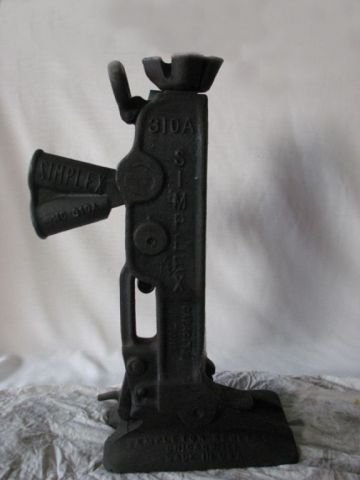RACK-AND-PINION JACK

-
Item owner - FNM
-
Category - FNM Collection
-
Inventory - 0157
-
Author - Templeton Kelly
-
Dimensions - 63x19x30 cm
-
Dating - 1950-1990
A device with a solid rectangular supporting base above which, forming a single body, is a hollow rectangle of robust sheet metal, grooved on the front and back. Inside it is a gear rack, which emerges from the top of the box, concluding in a knurled supporting surface composed of 4 legs. The rack is manoeuvred by an arm protruding on its front, formed of 2 conical pilot holes, assembled in the centre of the box, in which a longer lever may be engaged to add to its lifting power. The rack is integral with a lifting pedal that slides vertically along the rear groove. A small lever under the lever arm makes it possible to raise the rack in the top position and lower the rack in the bottom position.
The entire box containing the rack can be tilted back about 45°; a hooked ratchet at the lower end of the front allows the box to remain in a vertical position, hooking it onto the base.
The jack was used to raise heavy items such as derailed railcars or goods cars.
Lifting capacity: 14 inches.
It was supplied to teams working on the line, and to emergency squads if a train was derailed. It was positioned below the item to be lifted, being sure to check that it rested on a stable foundation; then the lever was used to raise the rack manually until the knurled base touched the body. A longer rod was then inserted into the cone to allow the work to be performed from a greater distance. It was sometimes necessary to add spacers with which to raise the supporting surface, or between the knurled surface and the item to be lifted.